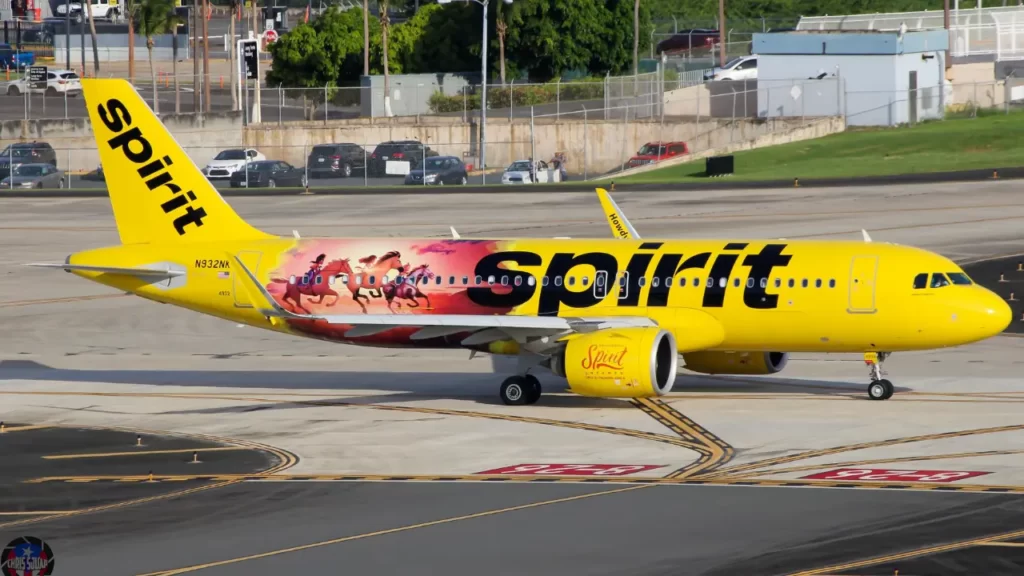
Spirit Airlines Overview
Spirit Airlines is an American ultra-low-cost carrier (ULCC) known for offering budget-friendly airfares with a no-frills approach. Please note that there may have been changes or developments since then. Here is an overview of Spirit Airlines:
Table of Contents
Founding and History:
- Spirit Airlines was founded in 1980 as Charter One, a Detroit-based charter tour operator. In 1992, the airline changed its name to Spirit Airlines and transitioned to a scheduled airline with a focus on low-cost operations.
Ultra-Low-Cost Carrier (ULCC) Model:
- Spirit Airlines operates as an ultra-low-cost carrier, emphasizing cost-saving measures and unbundled pricing. Passengers have the option to pay for additional services such as seat selection, carry-on bags, and in-flight snacks.
Hubs and Bases:
- Spirit Airlines operates from various bases and focus cities across the United States. Some of its major bases include Fort Lauderdale-Hollywood International Airport (FLL), Orlando International Airport (MCO), and Dallas/Fort Worth International Airport (DFW).
Fleet:
- Spirit Airlines operates a fleet primarily consisting of Airbus aircraft, including the Airbus A320 family (A319, A320, and A321). The airline has focused on maintaining a single-aisle fleet for operational efficiency.
Network:
- Spirit Airlines serves a mix of domestic and international destinations. The airline has traditionally focused on point-to-point routes, connecting passengers between cities without the need for a traditional hub-and-spoke network.
No-Frills Passenger Experience:
- Spirit Airlines offers a no-frills passenger experience, with the emphasis on providing affordable base fares. Passengers have the option to customize their experience by paying for additional services if desired.
Bare Fare and Optional Services:
- Spirit’s “Bare Fare” concept includes the basic cost of the ticket, and passengers can choose to add optional services for an additional fee. This includes services like seat selection, carry-on bags, checked bags, and more.
Frequent Flyer Program:
- Spirit Airlines operates a frequent flyer program called “Free Spirit.” Members can earn and redeem points for flights and other travel-related benefits.
Expansion and Growth:
- Spirit Airlines has pursued expansion by adding new routes and increasing frequencies on existing routes. The airline has aimed to reach a broader customer base by providing affordable travel options.
Operational Efficiency:
- Spirit Airlines has focused on operational efficiency and quick turnaround times at airports to optimize its ultra-low-cost model. This approach allows the airline to keep costs low and offer competitive fares.
Impact of COVID-19:
- Like many other airlines, Spirit Airlines faced challenges related to the COVID-19 pandemic. The airline implemented measures to adapt to the changing travel environment, including adjustments to its route network and health and safety protocols.
Spirit Airlines Overview history

- Spirit Airlines has a history that dates back to the early 1980s. Here are key milestones in the history of Spirit Airlines:
Founding as Charter One (1980):
- Spirit Airlines was founded in 1980 as Charter One by Ned Homfeld in Macomb County, Michigan. Initially, the airline operated as a charter tour operator.
Transition to Scheduled Airline (1990s):
- In 1990, Charter One transitioned from a charter operator to a scheduled airline, offering low-cost flights between Detroit and Atlantic City. The airline’s name was changed to Spirit Airlines in 1992.
Strategic Shift to Ultra-Low-Cost Carrier (2000):
- In the early 2000s, Spirit Airlines underwent a strategic shift towards becoming an ultra-low-cost carrier (ULCC). This involved adopting a no-frills model with low base fares and additional fees for optional services.
Bankruptcy and Restructuring (2005):
- In 2005, Spirit Airlines filed for Chapter 11 bankruptcy protection. The airline underwent a restructuring process to reduce costs and improve its financial position. It successfully emerged from bankruptcy later that year.
Fleet Modernization and Expansion (2000s-2010s):
- Spirit Airlines focused on fleet modernization by introducing newer Airbus A320 family aircraft. The airline expanded its route network, targeting both domestic and international destinations.
Initial Public Offering (2011):
- In May 2011, Spirit Airlines conducted its initial public offering (IPO), becoming a publicly traded company. The IPO marked a significant milestone in the airline’s history.
Growth and Market Expansion (2010s):
- Throughout the 2010s, Spirit Airlines experienced significant growth, expanding its market presence and adding new routes. The airline’s ultra-low-cost model attracted budget-conscious travelers.
Fleet Simplification (2019):
- In 2019, Spirit Airlines announced a fleet simplification plan by phasing out its aging Airbus A319 aircraft and focusing on the more fuel-efficient A320 and A321 models.
Impact of COVID-19 Pandemic (2020s):
- The COVID-19 pandemic had a profound impact on the aviation industry, including Spirit Airlines. The airline, like others, faced disruptions, reduced demand, and implemented measures to adapt to the challenging circumstances.
Continued Expansion and New Initiatives:
- Despite the challenges posed by the pandemic, Spirit Airlines continued to focus on expansion and introduced new initiatives. This included the launch of new routes, the introduction of innovative products, and efforts to enhance customer experience.
